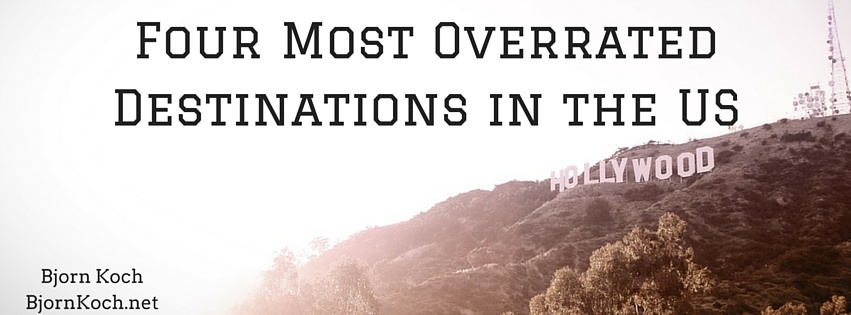
To view this blog post as a slideshow, click here.
If you’ve recently come into some time off of work and you’re looking to travel, chances are you’ve got a few places in mind. Regardless of where you are in the US, there are popular tourist attractions and travel destinations stretched far and wide across the US that see an influx of hundreds, if not thousands– of people every day. About five million people visit the Grand Canyon every year. The over 13,000 people a day that visit the Arizona landmark pales in comparison to the almost 50,000 that flock to the Magic Kingdom every day to visit Disney World.
While Disney and the Grand Canyon are two of the more popular tourist attractions around the United States, attendance and notoriety doesn’t necessarily connote with an equally high level of entertainment or historic significance. If you’re planning to travel the United States in the near future, check out these four popular landmarks you might want to avoid.
1. Plymouth Rock, Massachusetts
Visitors Per Year: About 1 million
The Attraction: A small boulder that has become symbolic in United States history because of its alleged significance in the Plymouth colony’s venture onto American soil.
Why It’s Not Worth It: This one can be tackled from a variety of angles. First, Plymouth Rock is just that, a rock. It is not an enormous, 35-foot high boulder that William Bradford caught sight of from the deck of the Mayflower and demanded the ship be docked upon. The rock, having been broken in two back in the 18th century and then chipped at periodically since, is about ⅓ the size it was when the Mayflower docked upon it in 1620.
Or perhaps it’s more accurate to say when they Mayflower did not dock upon it in 1620. There is simply no evidence at all that the rock holds any significance in US history. Essentially, you’re traveling to Massachusetts to see a rock stamped with the number “1620” that was probably relatively close to where the Plymouth colony was established.
2. The Rocky Statue, Philadelphia, Pa
Visitors Per Year: Tens of thousands
The Attraction: A statue of Rocky Balboa, arms raised in the air in triumph, located at the base of the steps of the Philadelphia Art Museum.
Why It’s Not Worth It: The story of Rocky is indeed one worth knowing. It’s a story of courage, bravery, triumph, opportunity and, of course, Philadelphia. But the statue is just a statue memorializing a fictional boxer portrayed by Sylvester Stallone. Rocky Balboa was (allegedly) based on Chuck Wepner and his fight with Muhammad Ali. Wepner has no connection to Philadelphia. Instead of waiting in line to take a photo with the statue, keep moving and head up the steps of the art museum to see much more than you will outside.
3. The Mall of America, Minnesota
Visitors Per Year: About 40 million
The Attraction: The Mall of America is the world’s largest mall, taking up 4.2 million square feet and its own zip code.
Why It’s Not Worth it: Traveling anywhere to see a mall, no matter the size, is probably a waste of your time. Yes, you can do a great deal of shopping in the mall and ride a roller coaster or two, but the Mall of America is just a mall. Chances are, you can shop at a Sears, get some food and surround yourself with a few hundred thousand clamoring people somewhere closer to home.
4. The Walk of Fame, Hollywood
Visitors Per Year: Hard to say, as it’s a public sidewalk.
The Attraction: A public walkway with the names of Hollywood’s best and brightest entertainers embedded into the concrete adorned with beautiful bronze stars.
Why It’s Not Worth It: The above sentence more-or-less covers the attraction. The visit will more than likely be composed primarily of walking down a crowded sidewalk to catch sight of Charlie Chaplin’s name under the foot of someone dressed as Captain Jack Sparrow or Elmo working for tips. As an added bonus, it’s against the Walk of Fame’s policy to ask for autographs on the off-chance that you do see a star.
If you’re planning your next vacation in the near future, make sure you do it right. Plan ahead to save money, map out some meals and perhaps most of all, avoid tourist traps.
